Third Trimester: Weeks 27 to End of Pregnancy
If you stay active and support your body’s needs, you’ll improve your mindset prior to labor and boost your chances of a smoother postpartum recovery.
By the time most women reach the third trimester, they’re starting to think more about labor.
A 2018 University of Madrid study found that women who performed aerobic exercise during their pregnancies had shorter labors than those who did not. And we know that strengthening the transversus abdominis and pelvic-floor muscles will support the pushing phase.
That said, your fitness is not a direct indicator of how quickly or smoothly your labor will go. “The only predictable thing about childbirth is that it’s very unpredictable,” says McCoy. Still, women can stack the cards in their favor.
Balancing the pelvis can be particularly helpful if you’re experiencing discomfort or dysfunction in this area, Plasencia says. “Issues such as pelvic-girdle pain and sacroiliac joint dysfunction may indicate imbalances in your pelvis, spine, or hips. If we can address these things, it might promote a better scenario for delivery.”
Mobility work to release tension in the pelvis, as well as strength training to build stability in the hips and pelvis, is crucial. A physical therapist (PT) or chiropractor trained to work with pregnant women can help make adjustments to maintain alignment and reduce pain.
Plasencia also recommends practicing different labor positions — such as squatting, being on hands and knees, and leaning over a stability ball.
Still, training for labor shouldn’t be your only motivation to work out during the third trimester. “In my last pregnancy, I wasn’t training for birth, or even for my baby’s health, but for my own health,” explains Mundell. “I always bring it back to feeling comfortable in my own body — ensuring that I was mentally, physically, and emotionally healthy to show up in my own life.”
Exercises to Try
TRX-Supported Squats: This move helps train both relaxation and engagement of the pelvic-floor muscles to help support labor and recovery.
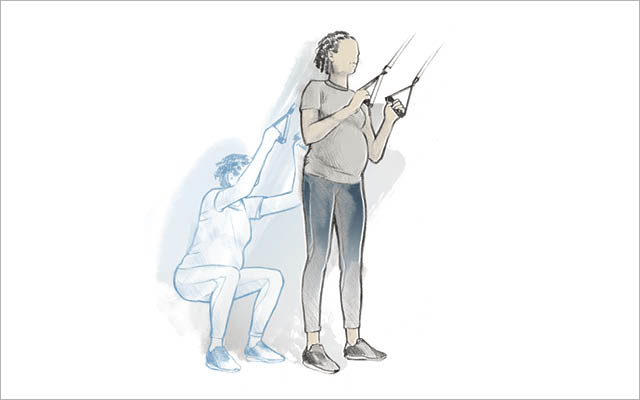 Illustration: James Carey
Illustration: James Carey- Hold the handles of a TRX or other suspension trainer and step back until the straps are taut.
- Inhale as you lower into a squat, maintaining a neutral pelvis.
- Pause at the bottom of your squat, exhale and then take another inhale, focusing on relaxing your pelvic floor.
- Exhale, then rise to standing.
- Perform three sets of 10 reps.
Pallof Press: This core-focused move helps you safely continue to stay connected to your deep core muscles while promoting good alignment.
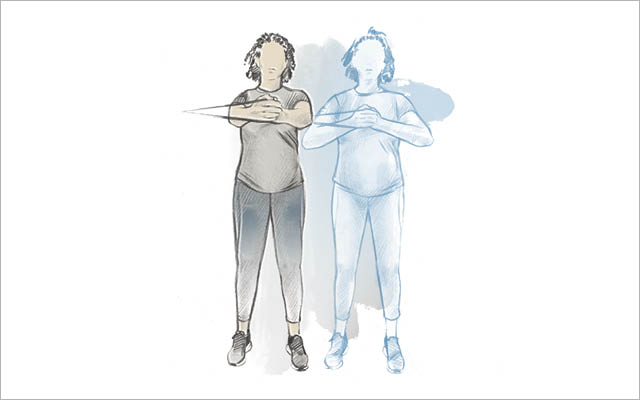 Illustration: James Carey
Illustration: James Carey- Anchor a medium to heavy resistance band to a secure surface at about chest height. Take the unattached end of the band and step sideways, away from the band’s anchor point, stopping when you feel resistance.
- Assume an athletic posture with a neutral pelvis and ribs stacked over hips. Hold the handle of the band at your chest.
- Inhale. Then exhale and press the handle directly in front of you. Avoid rotating at your torso, and maintain good alignment.
- Inhale as you return the handle to the starting position at your chest. Take an extra inhale before the next repetition, focusing on relaxing your pelvic floor.
- Perform 10 reps. Face the opposite direction to switch sides.
Iliacus Release: This move releases tension in the front of the pelvis to ease lower-back pain and help baby engage in a better position for delivery. Note: Experts consider it safe to be on your back in the late stages of pregnancy — for short periods, and as long as you feel comfortable. If this move is uncomfortable, skip it.
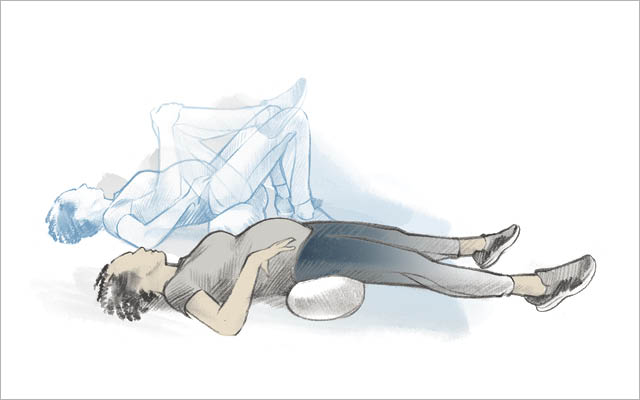 Illustration: James Carey
Illustration: James Carey- Lie on your back with knees bent, feet on the floor, and place a bolster or yoga block under your hips, positioning it so that your tailbone gently tucks. Rest here for a few minutes.
- Bring one knee up toward your chest and straighten the opposite leg. Gently move your outstretched leg a few inches from side to side for about 30 seconds. Switch sides.
This originally appeared as “Fit for Two” in the April 2019 print issue of Experience Life.
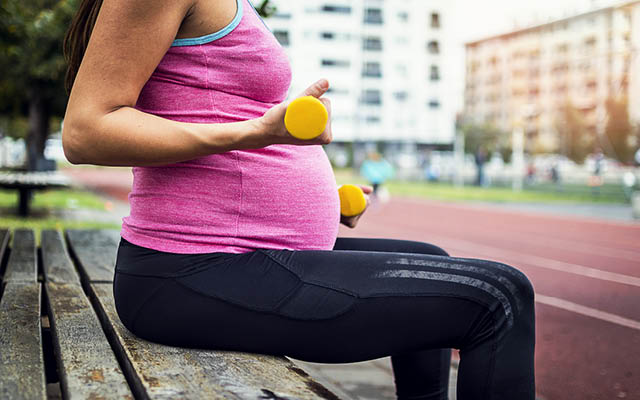

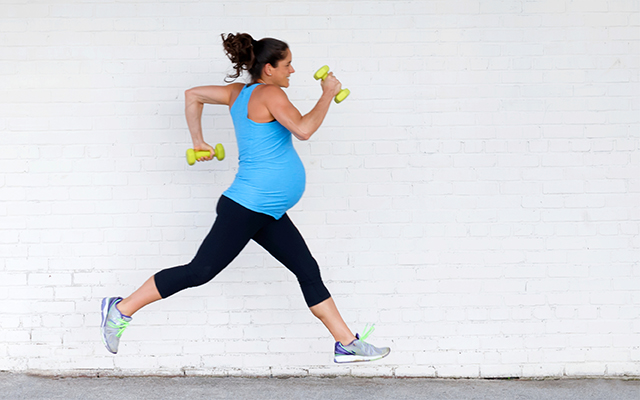

This Post Has 0 Comments